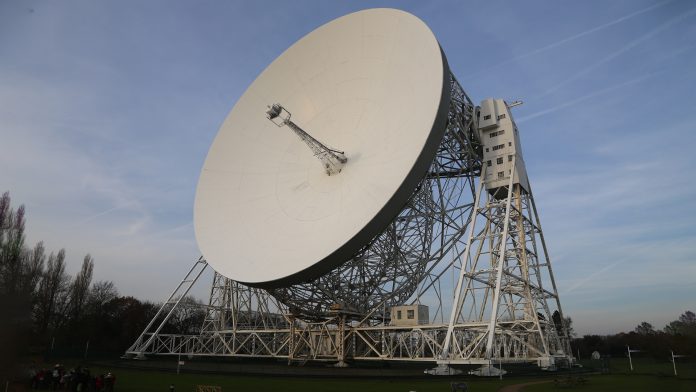An international team of astronomers has used the Lovell telescope at Jodrell Bank to illuminate radio signals coming from a magnetar.
Researchers from the UK, Germany, and Australia have used the Lovell telescope to make a significant breakthrough in understanding the unprecedented behaviour of a previously dormant magnetar, known as XTE J1810-197.
Magnetars are a type of neutron star and the strongest magnets in the Universe.
At around 8,000 light years away, XTE J1810-197 is the closest magnetar known to Earth.
The magnetar emits light, which is strongly polarised and rapidly changing.
This implies that that interactions at the surface of the star are more complex than what is suggested in previous theoretical explanations.
The results are published in two papers in Nature Astronomy.
Close observation of the magnetar
Detecting radio signals from magnetars is extremely rare. XTE J1810-197 is one of the only magnetars known to produce these emissions.
The magnetar was first observed to emit radio signals in 2003 before going silent for over a decade.
In 2018, the signals were detected by The University of Manchester’s 76m Lovell telescope at the Jodrell Bank Observatory.
Subsequently, university scientists, working alongside institutions such as the Max Planck Institute for Radio Astronomy in Germany, Australia’s CSIRO national science agency, and the University of Southampton, have been closely monitoring the magnetar.
Significant changes in radio signals
Close monitoring has revealed significant changes in the radio signals coming from the magnetar, particularly in the way the light was polarised. This has indicated the magnetar’s radio beam shifting its direction in relation to Earth.
The team think that this was caused by an effect called free precession. This is where the magnetar wobbles slightly due to asymmetries in its structure, similar to a spinning top.
The wobbling motion unexpectedly decreased rapidly over a few months until it eventually stopped altogether.
This challenges the notion suggested by numerous astronomers that repeating fast radio bursts might originate from magnetars undergoing precession.
Gregory Desvignes from the Max Planck Institute for Radio Astronomy in Bonn, Germany, and lead author of one of the two papers, said: “We expected to see some variations in the polarisation of this magnetar’s emission, as we knew this from other magnetars but we did not expect that these variations are so systematic, following exactly the behaviour that would be caused by the wobbling of the star.”
Results yet to be determined
However, the cause behind the alteration of circular polarisation, where the light appears to spiral as it traverses through space, remains uncertain.
Dr Marcus Lower, a postdoctoral fellow at CSIRO, who led the Australian research using Murriyang, CSIRO’s Parkes radio telescope, said: “Our results suggest there is a superheated plasma above the magnetar’s magnetic pole, which is acting like a polarising filter. How exactly the plasma is doing this is still to be determined.”









